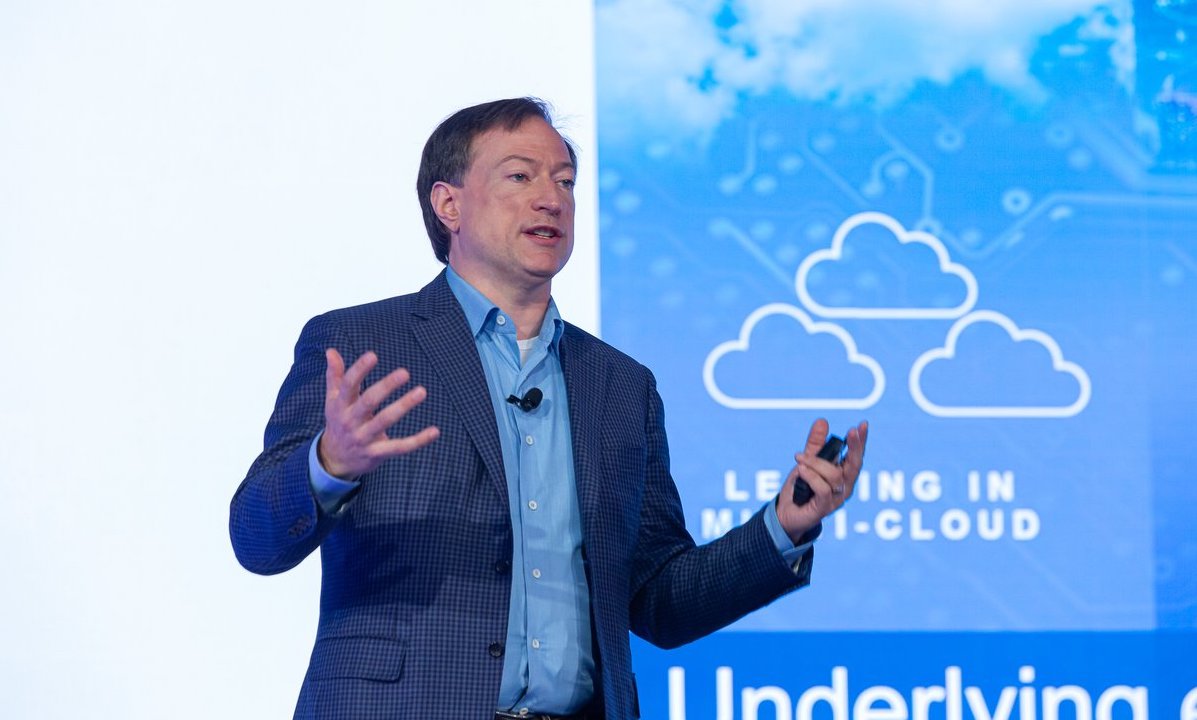 CLOUD
CLOUD
 CLOUD
CLOUD
 CLOUD
CLOUD
When Dell Technologies Inc. places the word “project” in front of a new initiative, it’s sending up a signal flare that starts the clock toward emergence of a new product or platform the next year.
Project Alpine, announced last year, transformed into a new set of storage offerings for APEX on Monday with a focus on software as a service and the hybrid cloud. In a glimpse of what to expect for 2024, Dell launched two new projects today. These were Project Helix, a generative artificial intelligence initiative in collaboration with Nvidia Corp., and Project Fort Zero, a plan to deliver an advanced zero-trust security solution validated by the U.S. Department of Defense within the next 12 months.
The other major news at Dell Technologies World in Las Vegas today was the release of Dell NativeEdge, operations software designed to simplify, secure and automate edge infrastructure and application deployment. NativeEdge emerged from Project Frontier, which Dell launched last year to address complexities facing enterprises in the business of edge management and deployment.
Interviews with company executives by SiliconANGLE in Las Vegas this week brought Dell’s long-term edge strategy into clearer focus. Customers are seeking to deploy edge solutions through a balancing act between hardware and software infrastructure products, and Dell believes it has an ideal solution to facilitate that deployment.
“The choice of that hardware platform is not tied necessarily to the code that you run to extend your edge because there’s something in the middle,” John Roese (pictured), global chief technology officer at Dell, said in an interview with SiliconANGLE for this story. “What’s in the middle is Frontier.”
In today’s announcement, Dell characterized NativeEdge as the “industry’s only edge operations software platform delivering secure device onboarding at scale, remote management and multicloud application orchestration.” The company’s vision for the edge meshes with its multicloud philosophy, where customers will need to leverage edge use cases across multiple platforms — and that requires a platform solution.
“No matter which cloud you use, you ought to be able to run at the edge,” Roese said. “But the consequence of that is that each of those experiences requires its own infrastructure. In order for all that software running in containers to actually be able to share an edge environment, you need to build a platform.”
Dell has been building its edge implementation in stages, including the release of edge-optimized hardware such as its PowerEdge servers, PowerScale storage and VxRail hyperconverged infrastructure over the past several years. Yet it still needed a control plane, an ability to orchestrate workloads to run on edge platforms with cloudlike capabilities.
Dell’s quiet acquisition of Cloudify Ltd., revealed earlier this year, set the table for Dell’s most recent edge announcements. Cloudify’s offerings are used by DevOps teams to manage workloads and software containers in multicloud environments.
“How do you know which code goes there and how to you manage it through its lifecycle?” Roese asked. “That’s not something the individual clouds will do, they don’t understand the concept of a shared edge. We had to deliver it all as a system with a control plane, which is NativeEdge. It’s the ability to orchestrate any of these workloads that you want to run on these edge platforms, to treat them like a cloud.”
For a large manufacturer, being able to automate packaging and shipping across multiple factory locations involves an ability to connect multiple technologies such as the internet of things, streaming data and camera images. Streamlining edge operations allows a manufacturer to rapidly and securely roll out new applications in a diverse landscape.
“The edge is very fragmented,” Pierluca Chiodelli, vice president of engineering technology for edge computing offers, strategy and execution at Dell, said in an interview. “The real challenge was to simplify automate and secure the edge. NativeEdge is the next step to solve this.”
Dell’s rollout of NativeEdge today included the results of a company study which assessed the economic impact of NativeEdge-enabled deployments for customers. According to Dell, customers benefitted from faster deployment and cost savings generated through a reduction in time to onboard new devices.
Chiodelli noted that there were 45 NativeEdge customers in the keynote audience at Dell Technologies World today, many of whom were instrumental in shaping the final product.
“These customers allowed us to design this in a better way,” Chiodelli said. “The people at the edge buy outcomes. Everybody is trying to find a way to solve the challenges at the edge.”
Support our mission to keep content open and free by engaging with theCUBE community. Join theCUBE’s Alumni Trust Network, where technology leaders connect, share intelligence and create opportunities.
Founded by tech visionaries John Furrier and Dave Vellante, SiliconANGLE Media has built a dynamic ecosystem of industry-leading digital media brands that reach 15+ million elite tech professionals. Our new proprietary theCUBE AI Video Cloud is breaking ground in audience interaction, leveraging theCUBEai.com neural network to help technology companies make data-driven decisions and stay at the forefront of industry conversations.